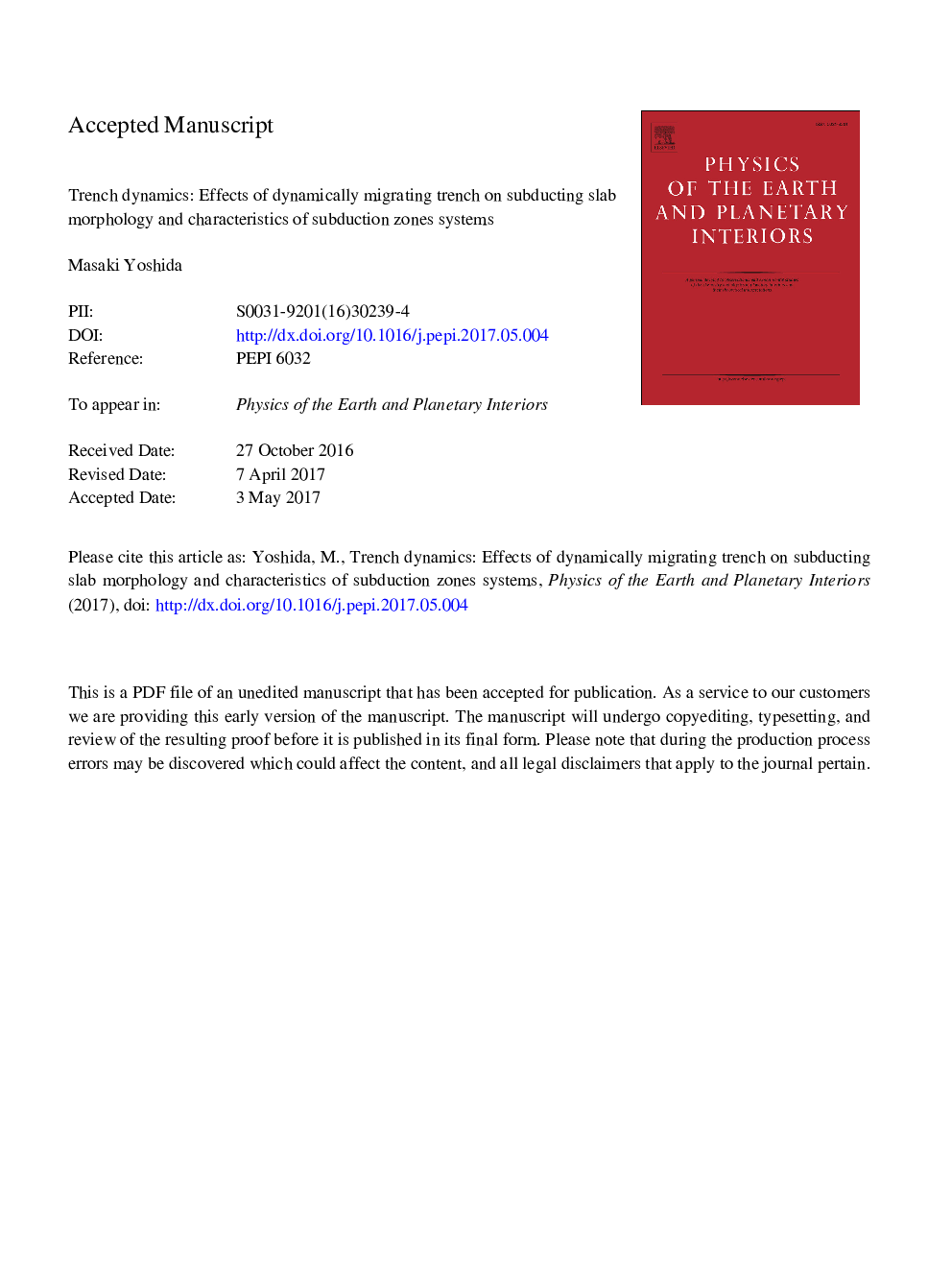| کد مقاله | کد نشریه | سال انتشار | مقاله انگلیسی | نسخه تمام متن |
|---|---|---|---|---|
| 5787314 | 1641472 | 2017 | 58 صفحه PDF | دانلود رایگان |
عنوان انگلیسی مقاله ISI
Trench dynamics: Effects of dynamically migrating trench on subducting slab morphology and characteristics of subduction zones systems
ترجمه فارسی عنوان
دینامیک ترانسیون: اثرات ترانشه مهاجرت پویا بر روی مورفولوژی اسلب سووودتی و ویژگی های سیستم های زون فرابنفش
دانلود مقاله + سفارش ترجمه
دانلود مقاله ISI انگلیسی
رایگان برای ایرانیان
کلمات کلیدی
صفحه سووچویت، اسلب عقب نشینی تونل، پیشرفته ترانس اسلب زیر افقی، منطقه انتقالی گودال،
موضوعات مرتبط
مهندسی و علوم پایه
علوم زمین و سیارات
فیزیک زمین (ژئو فیزیک)
چکیده انگلیسی
Understanding the mechanisms of trench migration (retreat or advance) is crucial to characterizing the driving forces of Earth's tectonics plates, the origins of subducting slab morphologies in the deep mantle, and identifying the characteristics of subduction zones systems, which are among the fundamental issues of solid Earth science. A series of numerical simulations of mantle convection, focusing on plate subduction in a three-dimensional (3-D) regional spherical shell coordinate system, was performed to examine subduction zone characteristics, including geodynamic relationships among trench migration, back-arc stress, and slab morphology. The results show that a subducting slab tends to deflect around the base of the mantle transition zone and form a sub-horizontal slab because its front edge (its 'toe') is subject to resistance from the highly viscous lower mantle. As the sub-horizontal slab starts to penetrate into the lower mantle from its 'heel,' the toe of the slab is drawn into the lower mantle. The results for models with dynamically migrating trenches suggest that trench retreat is the dynamically self-consistent phenomenon in trench migration. The reason for this is that the strong lateral mantle flow that is generated as a sequence of events leading from corner flow at the subduction initiation to return flow of the formation of a sub-horizontal slab in the shallower part of mantle wedge produces the retreat of the subducting slab. In fact, a 'mantle suction force,' which is generated in the mantle wedge to fill space left by the retreating subducting plate, is enhanced by the subsequent trench retreat. Even when upwelling flow with significant positive buoyancy originates just above a mantle phase boundary at a depth of 410Â km (as inferred from independent seismic tomographic, geodynamic, geochemical, and mineral physics), reaches the base of the overriding plate, and the overriding plate is slightly thinned, lithospheric stress tends to be compressed above the upwelling flow. The reason for this is that the strong lateral mantle flow originating from the upwelling flow generates resistance drag force at the base of the overriding plates. This situation may apply to a case of East Asia, under which the typical morphology of sub-horizontal slabs can be seen by seismic tomography. The strong lateral velocity observed in the shallower mantle wedge in the present numerical simulation may account for both the compressional subduction tectonics and back arc compression in the Japan-Kuril-Kamchatka, Aleutian, and South Chile trenches, as well as for weak plate-slab coupling, strong seismic coupling, and the possibility of great earthquakes along these trenches.
ناشر
Database: Elsevier - ScienceDirect (ساینس دایرکت)
Journal: Physics of the Earth and Planetary Interiors - Volume 268, July 2017, Pages 35-53
Journal: Physics of the Earth and Planetary Interiors - Volume 268, July 2017, Pages 35-53
نویسندگان
Masaki Yoshida,
